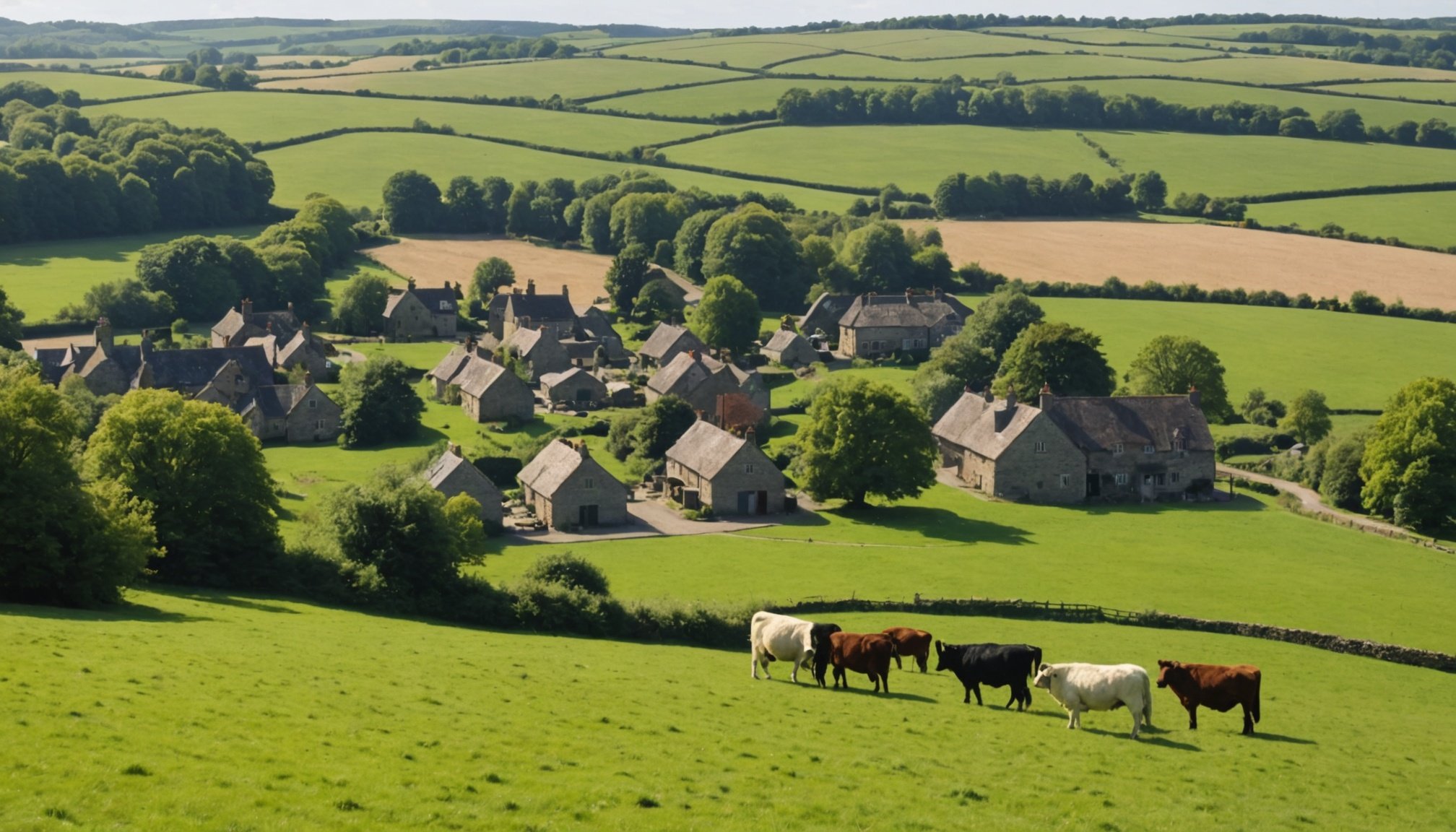Immediate impacts of new energy policies on rural Britain
Recent energy policy impact on rural Britain is substantial, affecting both the economy and daily life. Changes in regulations demand swift adaptation by agricultural businesses, many reliant on stable energy supplies for operations like irrigation, refrigeration, and machinery. Regulatory changes now encourage farms to integrate renewable energy sources, posing challenges due to initial costs and infrastructure adjustments.
Rural economies face immediate pressure as traditional energy prices fluctuate. Higher costs can strain small-scale farmers and rural enterprises, compelling some to reconsider production methods or reduce activities temporarily. At the same time, the policies stimulate investments in local energy projects, offering long-term benefits but requiring upfront commitment.
Topic to read : What Are the Key Challenges Facing the UK in Home News Today?
Infrastructure shifts are visible in the expansion of renewable energy installations such as solar panels and wind turbines. These changes alter energy access patterns, often improving sustainability but sometimes disrupting existing grid reliability. Rural communities must navigate these transformations while maintaining productivity and economic resilience.
Understanding these immediate impacts helps rural Britain prepare for longer-term adjustments. Awareness of regulatory changes and proactive engagement with new energy solutions can turn challenges into opportunities for sustainable growth.
Also read : How Do Recent UK Events Influence Homebuyers’ Decisions?
Key adaptation strategies for rural communities
Rural energy adaptation is essential to promote sustainability and resilience in remote areas. Transitioning to renewable energy sources such as solar panels, wind turbines, and biomass systems offers rural communities a dependable and eco-friendly power supply. Solar installations, in particular, are well-suited for isolated locations with abundant sunlight, reducing reliance on costly fossil fuels.
Community initiatives play a pivotal role in rural energy adaptation. Local cooperatives encourage shared ownership and management of renewable energy projects, which fosters community engagement and financial benefits. Such projects can include cooperative solar farms or micro-wind installations, ensuring energy costs are kept affordable for residents.
Modernising farming practices complements energy adaptation goals. Techniques like precision agriculture reduce energy consumption by optimizing resource use, while biogas digesters convert agricultural waste into usable energy. By integrating renewable energy with smart farming, rural communities enhance productivity and environmental stewardship.
These strategies demonstrate practical pathways to achieve energy autonomy, lower emissions, and improve livelihoods in rural areas. Emphasizing community initiatives alongside technological upgrades promotes lasting and inclusive adaptation to energy challenges.
Challenges and barriers to effective adaptation
Adapting to new conditions often faces significant adaptation barriers, particularly in rural areas. One major hurdle is the limited infrastructure that restricts access to modern technologies. Without robust internet connectivity or transportation networks, rural communities find it difficult to implement innovative solutions effectively.
Another critical challenge involves financial constraints. Small communities frequently lack the funding necessary to invest in adaptation projects or to maintain new systems. This economic strain slows progress and reduces the scale of initiatives, even when the need for change is urgent.
Additionally, policy implementation can be hindered by complex regulations and bureaucratic procedures. Navigating these red tape obstacles consumes valuable time and resources, often discouraging local leaders from pursuing adaptation strategies. This challenge is compounded when national policies fail to consider local realities, creating a misalignment that obstructs practical action.
Addressing these barriers requires tailored support that combines improved infrastructure, targeted funding, and simplified regulatory frameworks. Doing so can empower rural communities to overcome the multifaceted challenges they face in adapting effectively to changing environments.
Case studies of successful rural adaptation
Exploring proven examples of rural energy transition
Rural areas face unique challenges in embracing clean energy, but numerous case studies illustrate effective strategies. One notable success is community-led solar projects in England. These initiatives harness local involvement to overcome financial and logistical barriers. By pooling resources, communities have installed solar panels that not only supply energy but also foster shared ownership and resilience.
In Scottish rural settlements, biomass heating offers an innovative adaptation route. Utilizing locally sourced wood chips and agricultural residues, these systems provide reliable heat while reducing dependence on fossil fuels. This approach aligns with rural livelihoods and fuels a sustainable energy transition that supports local economies.
Wales’s experience with wind energy initiatives further underscores the potential of renewable adaptation. Small-scale wind turbines tailored to rural landscapes have been integrated successfully. These projects highlight the importance of community consultation and appropriate technology choice to achieve environmental and social benefits.
These success stories demonstrate practical pathways for rural areas eager to participate in the clean energy revolution. Understanding community engagement, technology suitability, and resource availability is key to replicating these examples elsewhere.
Government initiatives and support programmes
Governments worldwide play a crucial role in accelerating the energy transition in rural areas. Specific government initiatives focus on providing rural funding to support clean energy projects, which helps communities reduce reliance on fossil fuels. These initiatives are designed to ease the financial burden associated with renewable energy adoption, often taking the form of grants, subsidies, and targeted funding schemes.
Many rural communities gain access to advisory services that offer guidance on project development, technical expertise, and regulatory requirements. Such services are essential for overcoming barriers to entry and ensuring projects are both viable and sustainable.
Devolved governments and local authorities also contribute significantly by tailoring funding programmes to meet regional needs, reflecting the diverse challenges rural areas face. This decentralized approach helps improve the relevance and effectiveness of energy transition support.
Examples of support include targeted subsidies for solar panel installation, funding for biomass heating systems, and technical assistance for community-owned renewable energy schemes. These efforts collectively accelerate the integration of renewables into rural energy systems, ensuring a smoother, more inclusive transition to a low-carbon future.
Community perspectives and expert insights
Understanding community feedback is essential when tackling the rural energy debate. Rural residents and farmers often express concerns about how policy changes impact their daily lives and economic stability. For instance, many emphasize the need for reliable and affordable energy sources that do not disrupt agricultural operations. They also value policies that consider their unique infrastructure limitations and long distances from urban centers.
Energy policy experts and rural advocacy groups contribute critical analysis to this debate. Their expert opinion highlights the importance of balancing sustainability goals with practical solutions tailored to rural contexts. Experts often caution against one-size-fits-all policies, advocating for targeted incentives that support renewable energy adoption without compromising rural livelihoods.
Lessons from past policy implementation reveal mixed outcomes. Successful initiatives were those that incorporated local input early and addressed specific rural challenges, such as grid connectivity and financing barriers. Conversely, programs lacking community engagement frequently faced resistance or failed to achieve intended goals.
By integrating community feedback with expert insights, policymakers can better design energy frameworks that meet rural needs, promote innovation, and foster enduring support for change.
Recommendations for successful adaptation
Adapting effectively to the challenges faced in rural areas requires a strategic approach that emphasizes local partnerships and robust knowledge exchange. Strengthening collaborative networks between community members, local authorities, and experts fosters shared understanding and tailored solutions. This adaptation recommendation ensures that interventions align with the unique needs of rural communities, promoting ownership and sustainability.
Investment in rural energy infrastructure is another crucial pillar for sustainable rural development. By directing resources toward reliable, clean energy options, communities can improve quality of life and economic prospects. Accessible energy supports agricultural productivity and small businesses, reducing vulnerabilities to environmental and economic shocks.
Promoting resilience through education and technical assistance empowers rural populations to better anticipate and respond to change. Training programs and extension services provide practical skills and up-to-date information, helping residents adopt innovative practices and technologies. This policy advice encourages self-reliance and continuous learning, which are essential for long-term adaptation.
Together, these adaptation recommendations create a comprehensive framework that balances policy advice with grassroots action. Prioritizing local engagement, infrastructure, and capacity building offers a pathway toward durable progress and resilient rural development.
Future outlook for Britain’s rural communities under evolving energy policies
Britain’s rural communities stand at a critical junction as policy trends evolve to meet climate goals. The future of rural energy hinges on continued support for renewable integration and infrastructure upgrades. Policies increasingly favour decentralised energy systems, enabling villages to adopt solar, wind, and biomass solutions tailored to local resources. This shift promises to cut carbon footprints while boosting rural economies.
Innovations on the horizon include advanced energy storage and smart grid technologies that optimise energy use and enhance reliability in remote areas. Emerging policies aim to support such innovations through funding and regulatory frameworks, ensuring rural residents can access cutting-edge solutions without disproportionate costs.
Ensuring an equitable transition is paramount. Policymakers are focusing on mechanisms to prevent energy poverty and encourage community ownership of projects. This approach balances environmental goals with social welfare, helping rural populations adapt without undue hardship. The ongoing evolution of energy policy reflects recognition that rural areas require targeted strategies, combining innovation with financial and technical support to thrive sustainably.









